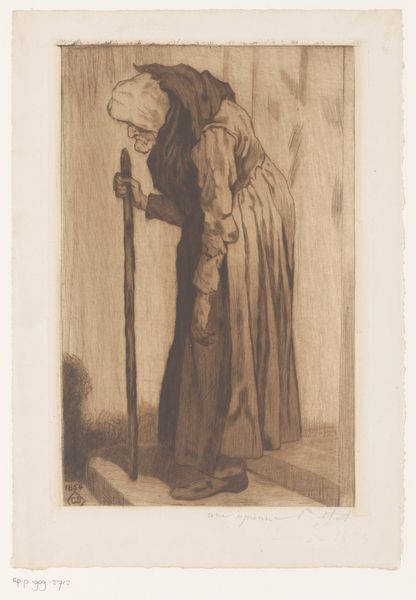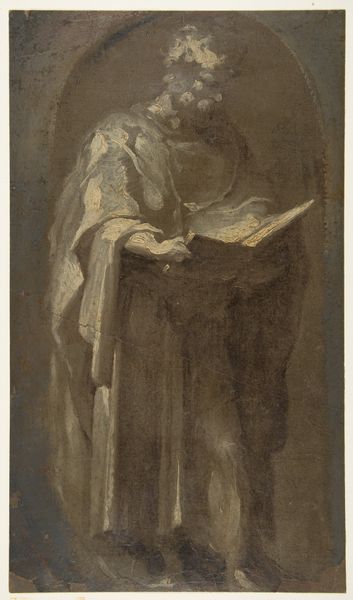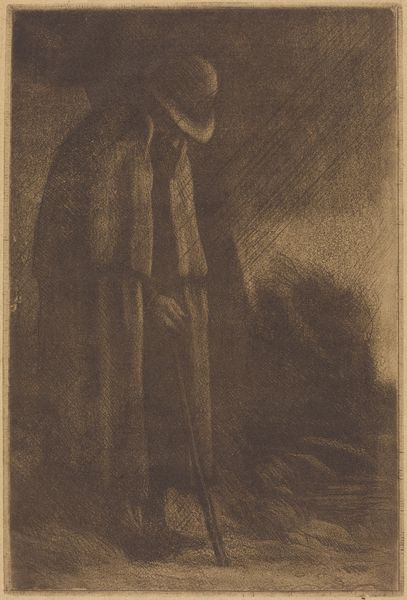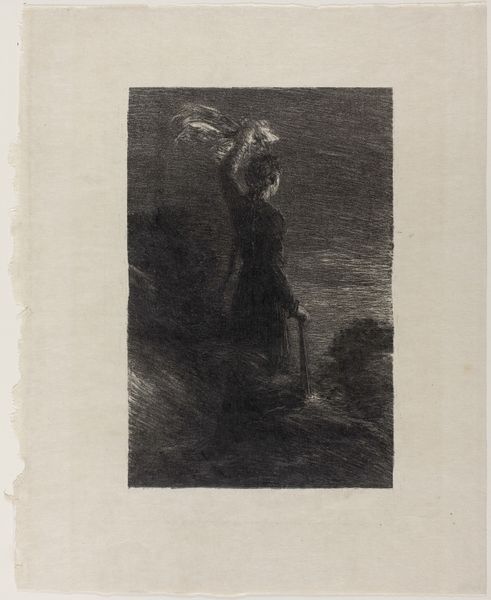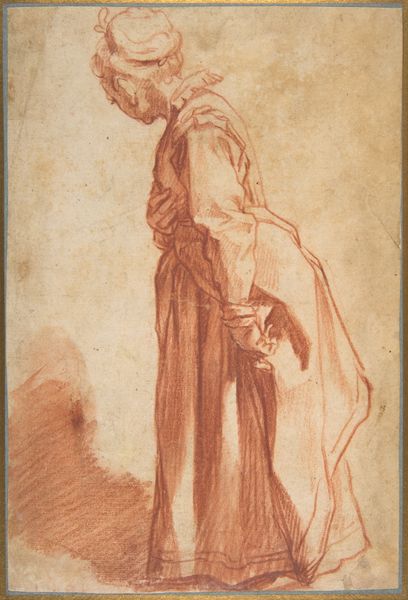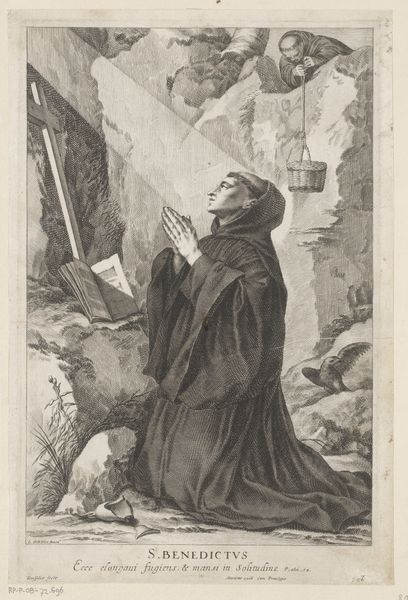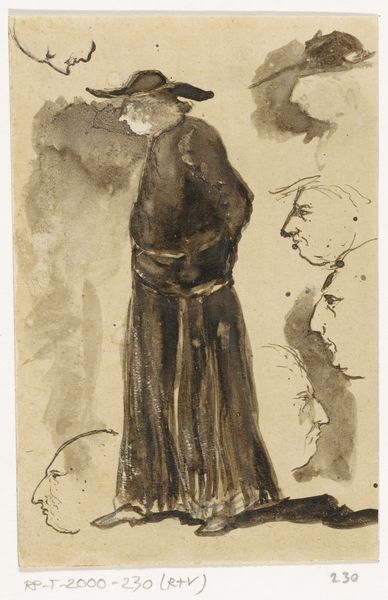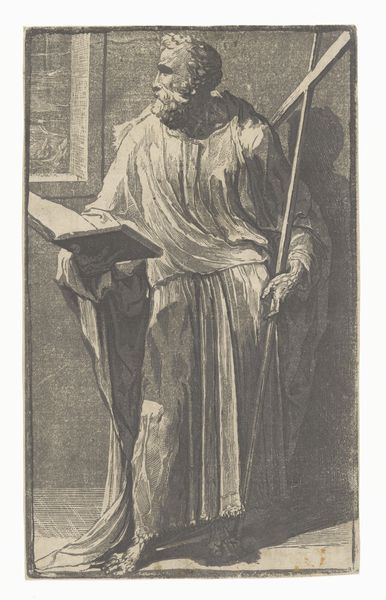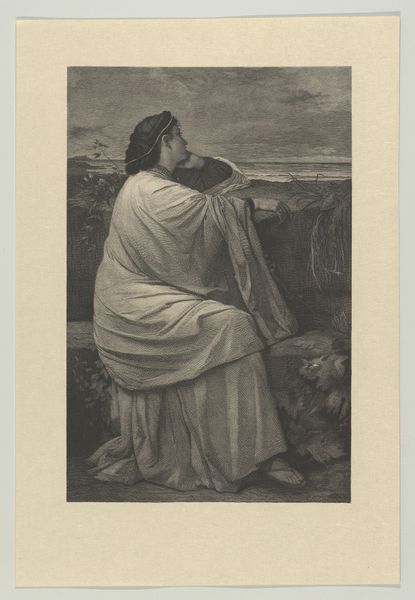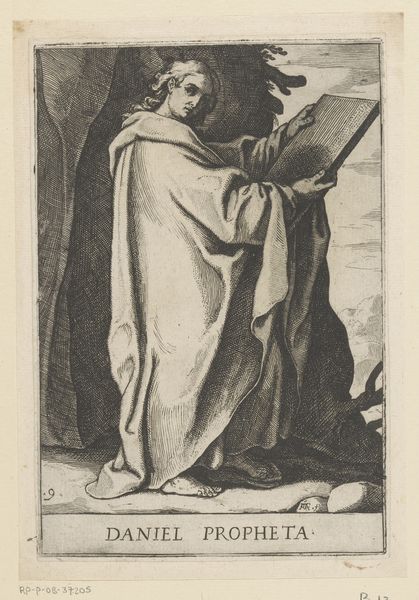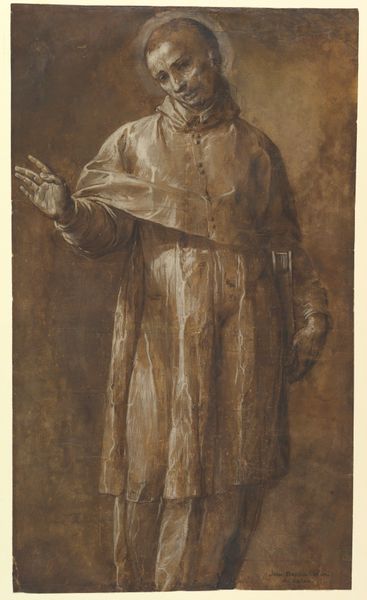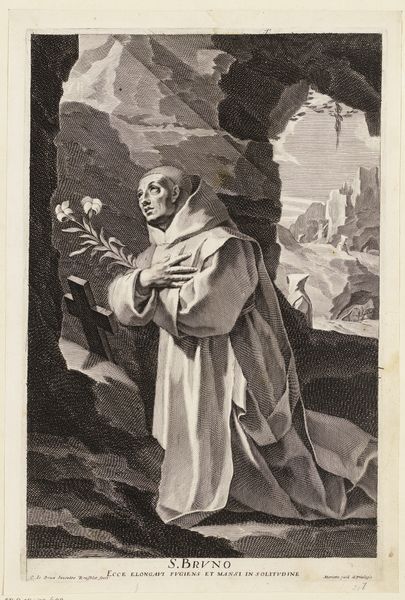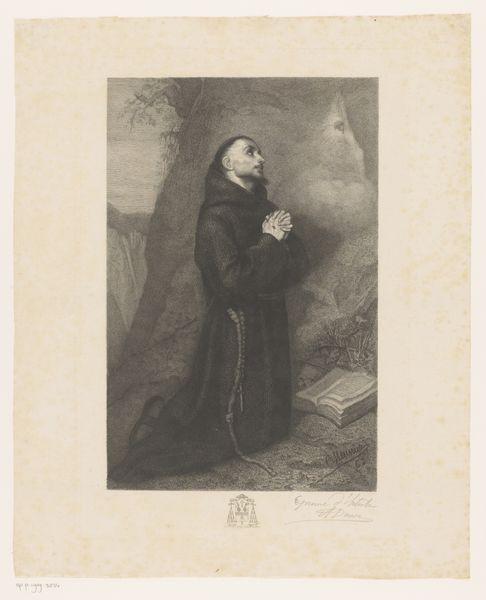
painting, oil-paint
#
portrait
#
baroque
#
painting
#
oil-paint
#
landscape
#
figuration
#
chiaroscuro
#
history-painting
Dimensions: 74 x 40 3/4 in. (188 x 103.5 cm)
Copyright: Public Domain
Editor: Here we have Francisco de Zurbarán’s “Saint Benedict,” an oil painting dating back to the 1640s. It's currently housed at the Metropolitan Museum of Art. I find the contrast between the stark robe and the dramatic landscape compelling. What strikes you most about this piece? Curator: It’s Zurbarán's depiction of materiality. Look at the coarse texture of the Benedictine robe – the way the paint mimics the rough weave, signifying a life of humble labor. Note also the smoothness of the ceramic vessel he holds, the clay likely sourced locally and formed by a craftsman. Consider these materials not as mere representations, but as indices of lived experience and social structures. Editor: So, you're saying the materials themselves tell a story? The rough cloth versus the refined pottery… Curator: Precisely. What would happen if that robe was silk? Or the pitcher metal? Think about the original workshop— the availability of pigments, the quality of the linen he depicted—and their direct influence on the art’s very existence, revealing connections between labor, religious iconography, and artistic production. Zurbarán used what he had available. It’s important to consider that he was based in Seville; how might it be different had it been painted in Flanders? Editor: It's fascinating to consider the art in terms of material availability and the context of its creation. I had been focusing on the figure and symbolism, but it’s powerful to examine the very fabric, literally, of its making. Curator: Indeed, looking through a material lens helps us avoid romanticizing the image and see the practical realities that underpinned its creation. Editor: Thank you. I now view not just what’s represented, but the story of its production, from earth and pigment to canvas. Curator: Exactly. Art isn't just about what we see, but also about *how* it came to be.
Comments
No comments
Be the first to comment and join the conversation on the ultimate creative platform.

